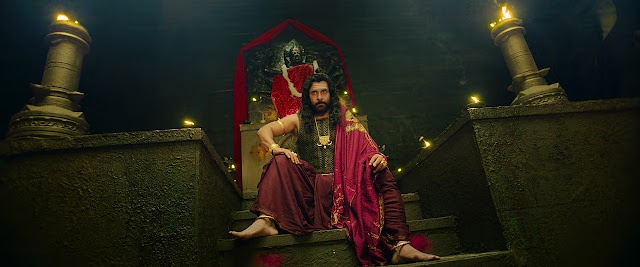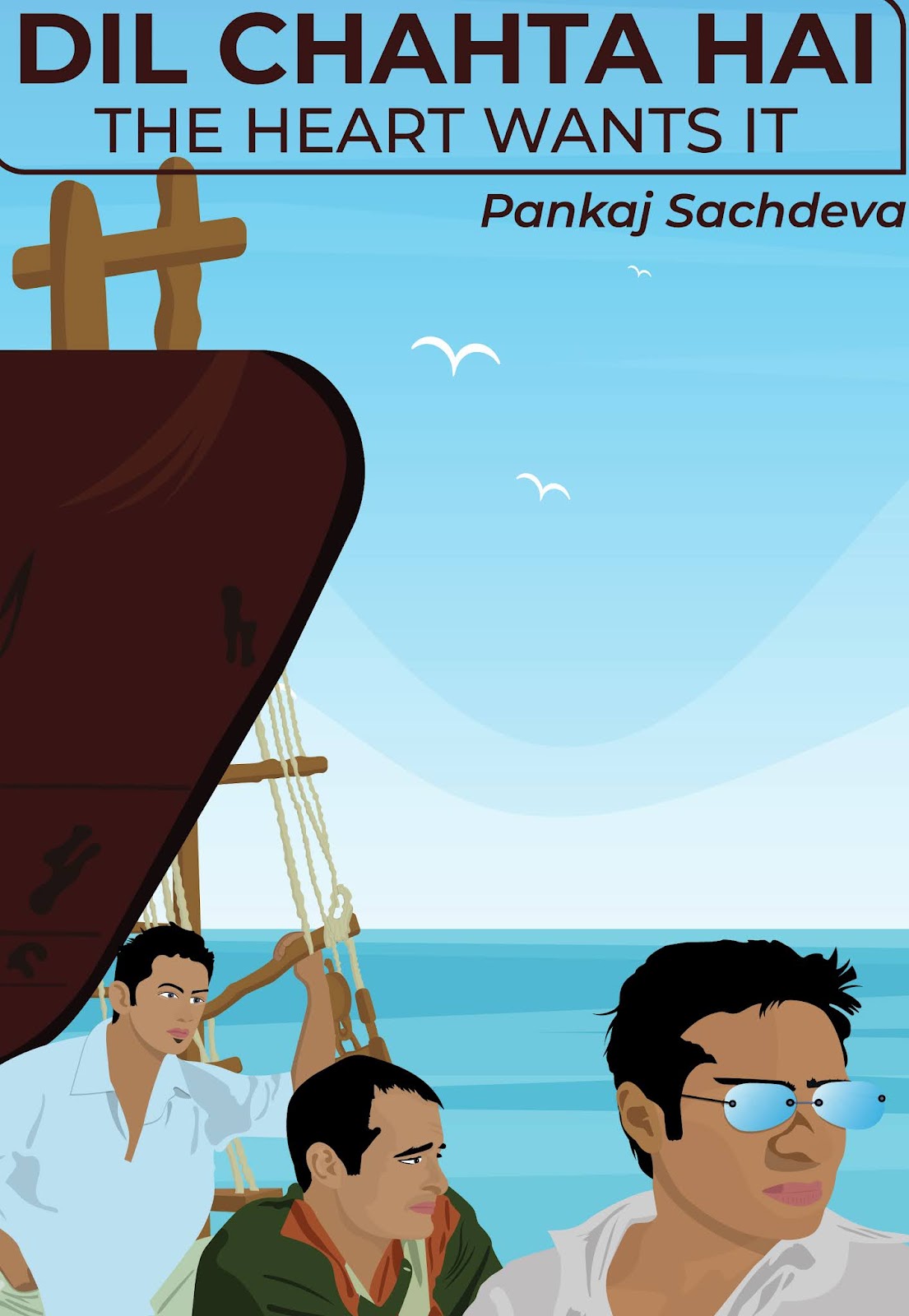
In Ponniyin Selvan: I, Mani Ratnam brought to life the epic 1955 novel of Kalki Krishnamurthy. The story revolved around the succession battle in the Chola kingdom and the threat from the Pandyan rebels who wanted revenge against the Cholas. Vandiyathevan (Karthi), a young soldier, set out across the Chola land to deliver a message from the Crown Prince, Aditha Karikalan (Vikram), to his father, Emperor Sundara Chola (Prakash Raj), and his sister, Princess Kundavai Devi (Trisha), about a conspiracy. The film ended when the other son of Sundara Chola, Arulmozhi Varman (Jayam Ravi), also known as Ponniyin Selvan, was ambushed at sea by the Pandyan rebels. He was saved by the mysterious Oomai Rani (Aishwarya Rai Bachchan), who looked like Nandini (Aishwarya Rai Bachchan), Aditha's ex-lover and the wife of Periya Pazhuvettaraiyar (R. Sarathkumar), the chancellor of the Chola Empire.

In Ponniyin Selvan: II, Ratnam concludes the story with grandeur and aplomb. There is action and emotion. What struck me about the second film's story is how all the characters have been given shades of grey. No one really comes across as a perfect villain or a perfect hero. The loyalties and tensions of the first film seem to have been mellowed down. Periya Pazhuvettaraiyar, who hatched a conspiracy against Aditha in the first film, comes to protect the same person. Parthibendran (Vikram Prabhu), Aditha's friend, conspires with Nandini to get him to the palace. However, the most fascinating character in both films remains Nandini. Whenever she comes on the screen, there was an altogether different energy. For me, the film ended after her death. Aishwarya Rai Bachchan has delivered one of her career-best performances in the film.

There are also quite a few romantic moments in Ponniyin Selvan: II, which again prove Ratnam's ability to craft beautiful love stories that are both tender and violent. In one heartwarming moment, Kundavai comes to an island where Vandiyathevan is kept tied and captured while blindfolded. She takes his sword and puts it on his neck. He thinks he might be punished but soon realizes it is Kundavai. He then gradually starts moving closer to her using his hands, covering the distance between the two till he reaches the end of her arm. It is a charming moment that exudes chemistry, even when one of the characters cannot see the other. She then reminds him of the promise that he had made to her, where he said that his life belonged to her. This is a throwback to a similar scene in Ponniyin Selvan: I, where it was Vandiyathevan who had traveled over the waters to meet Kundavai in the middle of a lake. Then, she had flirtatiously asked him to jump in the water (like Shakthi in Alai Payuthey had asked Karthik to jump from the train). The scene in Ponniyin Selvan: II complements the one in the earlier film. The lilting Aga Naga plays in the background in both films.
"Aganaga aganaga muganagaiye ho,
Muganaga muganaga murunagaiye ho,
Murunaga murunaga tharunagaiye ho,
Tharunaga tharunaga varunanaiye."
"When my heart smiles, my face smiles as well.
Flowers grin when my face cracks a smile.
When flowers smile, trees smile as well.
Buds grin when trees burst into a smile."


On the other end of the romance spectrum is the story of Nandini and Aditha. There is no love lost between the two exes. At one point, Aditha refers to Nandini as a snake. Ponniyin Selvan: II takes us to the origins of their love story. The initial bits of the film depict the events that led them to fall in love. We learn that Nandini was forcibly moved out of the kingdom as she was not deemed of the right heritage befitting for the queen. Their love story begins when Kundavai meets Nandini and befriends her. At one stage, Kundavai takes Nandini to the palace and gives her jewelry to try on. At that point, the young Aditha walks in. Nandini, feeling shy, just runs away. This moment is reminiscent of the scene in Ratnam's Dil Se.. when Moina (Manisha Koirala) tries on the jewelry given by the relatives of Amar (Shah Rukh Khan), who then walks in and sees her in the mirror. From this point in Ponniyin Selvan: II, the story of Nandini and Aditha kept reminding me of Amar and Moina in Dil Se...

Set against the backdrop of insurgency in Assam, Dil Se.. was the story of a journalist Amar who falls for Moina, a mysterious woman on an assignment, but she does not reciprocate his feelings. However, when Amar is about to get married, she arrives at his doorstep asking for help. It is soon revealed that Moina is part of an insurgent group planning to carry out suicide bomb attacks during the Republic Day celebrations in Delhi. There are parallels between Dil Se.. and Ponniyin Selvan: II as to how both films depict rebels fighting for their independence.

The stories of Nandini and Moina seem more similar. They are pawns used by others to carry out dangerous tasks (though they do differ in their respective sense of agency). The women—Nandini and Moina—are constantly reminded of their mission. Love is a distraction, and they must focus on the larger goals. Early in Ponniyin Selvan: II, a woman accomplice sees Nandini playing with the ring Aditha gave her. She reminds Nandini that it was Aditha who had left her and thrown her out, and it was Veera Pandiyan who saved her. Thus, she should not forget his contribution to her life and continue to focus on their mission to overthrow the Cholas. Likewise, in Dil Se.., there is a scene when Moina starts to waver in her commitment to her mission. She develops sympathy toward Amar and his family. She starts doubting that many innocent people will die because of her mission. Her friend and partner, Mita (Mita Vashisht), sees her internal vacillation and takes her out in the rain. She reminds her of the pledge of complete revolution and independence for their nation.

In Ponniyin Selvan: I, there is a conversation between Aditha and his friend Parthibendran who tells him to forget Nandini as she is married. Desiring another man's wife is a sin. Aditha says that will have to first cut his heart out from his body to forget her. He was in love with her since his childhood. One day, she suddenly disappeared, making him face the first death of his life. Since then, he has become a walking corpse. And, all the things—wine, song, blood, war—he is now doing are simply to forget her and to forget his own self. In Dil Se.., Moina, tired of Amar's pestering about her relationship status, tells him she is married to fend him off. Amar is disappointed to learn the same. He tells his manager Mrs. Burman (Arundhati Nag) that he is in love with a married woman. Like Parthibendran, she tells him to forget and move on. Amar tries to do the same but finds out Moina was not married. He then follows her to Leh and spends a few days with her. They become close. But then, like Nandini, Moina suddenly disappears, leaving him with only a message written on the sand. Like Aditha, Amar cannot forget her. He finds solace in love ballads hoping to hear from her. Aye Ajnabi, tu bhi kabhi aawaaz de kahin se. Because he is living in pieces. Because he is living an incomplete life without her. Main yahan tukdon mein jee raha hoon. Main adhura, tu adhuri jee rahi hai.




Similar Shots
Finally, we see how Aditha and Amar willingly walk toward their death. Aditha knew that Nandini wanted to kill him, yet he decided to go to her chambers without hesitation. When he meets her, he says he values her more than his life. He is already a living corpse, as he does not have a soul. He is ashamed of himself that he became so heartless. He was prepared to die. When Nandini refuses his proposal, he gives her his dagger and embraces her so that it inserts into him. And, then, he goes away from this world forever. In Dil Se.., Amar, too, walks toward his own death. He runs to the same route that Moina planned to take to complete her suicide mission. He knew she was a human bomb and confronts her. He keeps questioning her if she loves him. She finally relents. They both embrace each other and escape to some other world as in the commotion, her bomb had got activated. He wanted her to take him along wherever she goes. And she did to a place away from this entire world. In Dil Se.., Ratnam showed the seven stages of love as defined in Arabic literature. The seventh and final stage of love is maut—death. Aditha and Amar successfully reach the last stage of love. Their wish to die in the arms of their lovers was finally fulfilled. Mujhe maut ki goad mein sone de. Teri rooh mein jism dubone de. Death comes to Aditha through the hands of his Nandini in the arms of his Nandini. Death comes to Amar through the hands of his Moina in the arms of his Moina. Thus, we see that the heart of Ponniyin Selvan: II says Dil Se...

Trivia:
1. Raavan and Ponniyin Selvan:II.


2. Iruvar and Ponniyin Selvan:II.

Other Reading:
1. The Wonder Women of Ponniyin Selvan: I—Link
2. Satrangi Re—The Seven Stages of Love—Link
Dialogue of the Day:
"When my heart smiles, my face smiles as well.
Flowers grin when my face cracks a smile.
When flowers smile, trees smile as well.
Buds grin when trees burst into a smile."
—Ponniyin Selvan: II






















